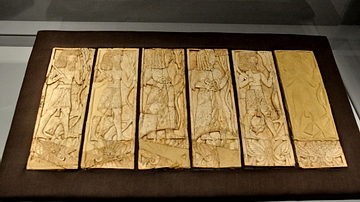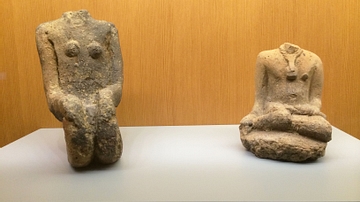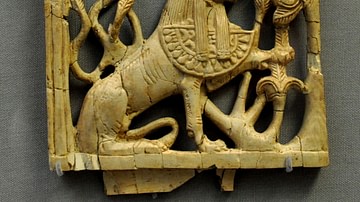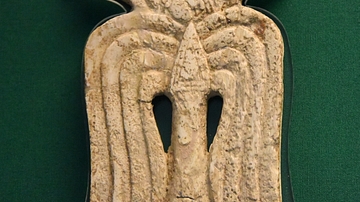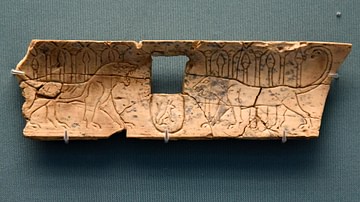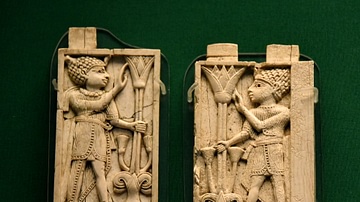Illustration
Two figures sit facing each-other either side of a cartouche surmounted by two feathers. The inscription consisting of Egyptian hieroglyphs, cannot be read, the signs have been treated in a purely decorative manner by the Phoenician craftsmen. Some of the original colored inlay and gold leaf overlay survive. Excavated by Sir Henry Layard; acquisition date 1848. Neo-Assyrian Period, 9th to 8th centuries BCE. From the doorway between Rooms V and W of the North-West Palace at Nimrud (ancient Kalhu), Mesopotamia, modern-day Iraq. (The British Museum, London).
About the Author
Cite This Work
APA Style
Amin, O. S. M. (2016, September 08). Nimrud Ivory Plaque of Two Seated Figures. World History Encyclopedia. Retrieved from https://www.worldhistory.org/image/5646/nimrud-ivory-plaque-of-two-seated-figures/
Chicago Style
Amin, Osama Shukir Muhammed. "Nimrud Ivory Plaque of Two Seated Figures." World History Encyclopedia. Last modified September 08, 2016. https://www.worldhistory.org/image/5646/nimrud-ivory-plaque-of-two-seated-figures/.
MLA Style
Amin, Osama Shukir Muhammed. "Nimrud Ivory Plaque of Two Seated Figures." World History Encyclopedia. World History Encyclopedia, 08 Sep 2016. Web. 15 Apr 2025.



